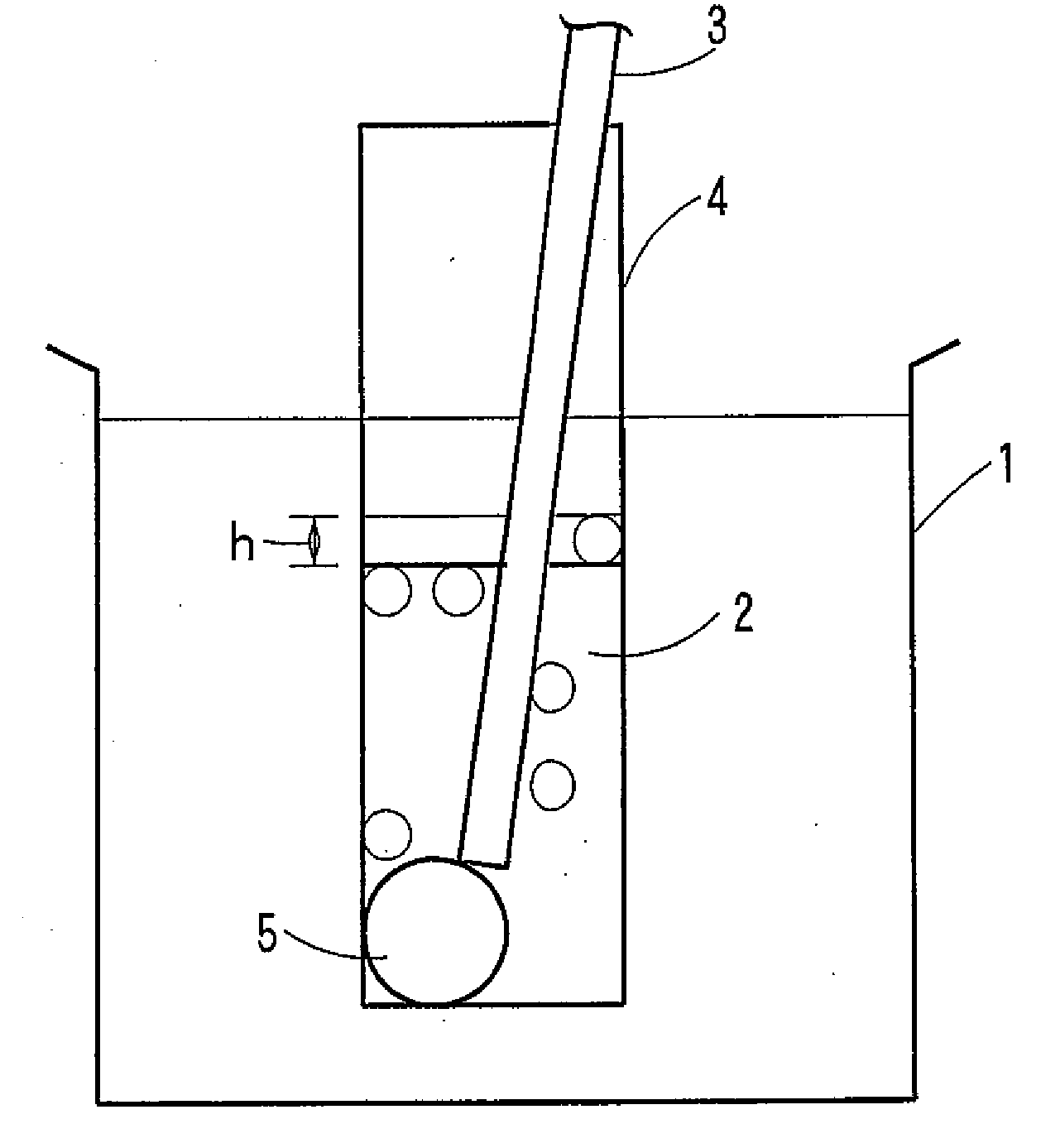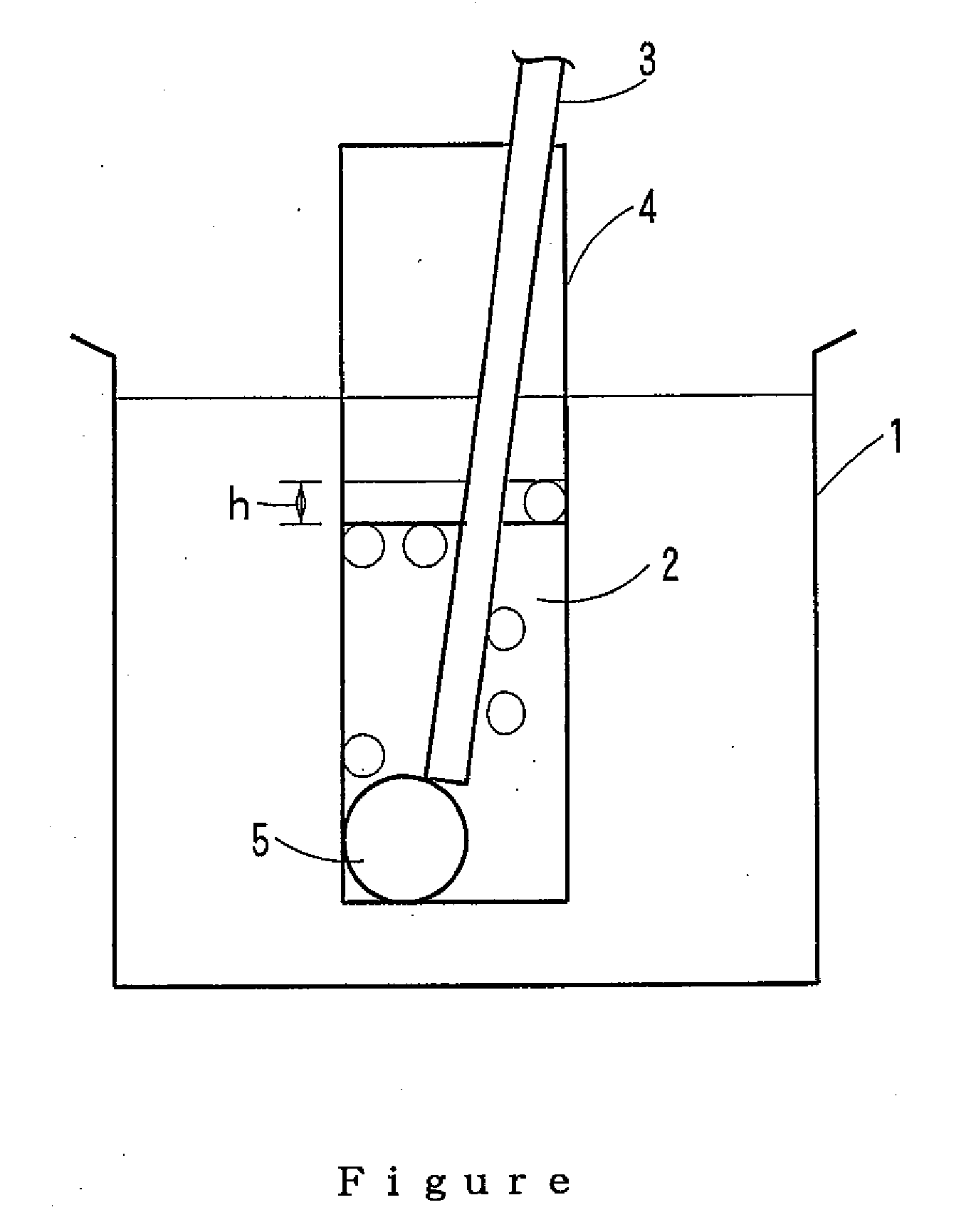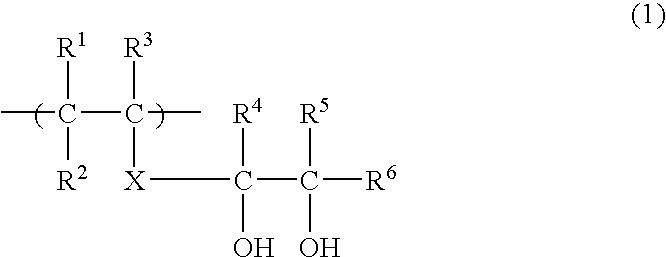Water-soluble polyvinyl alcohol resin filament and nonwoven fabric made by using the same
a technology of water-soluble polyvinyl alcohol and nonwoven fabric, which is applied in the direction of weaving, yarn, transportation and packaging, etc., can solve the problems of rusting of the forming machine, deterioration of the working environment, and discoloration of embroidery threads, so as to suppress the emanation of acetic acid odor, improve the working environment, and excellent water solubility
- Summary
- Abstract
- Description
- Claims
- Application Information
AI Technical Summary
Benefits of technology
Problems solved by technology
Method used
Image
Examples
example 1
Preparation of Water-Soluble PVA-a
[0076]First, 1500 g of vinyl acetate, 2100 g of methanol and 180 g of 3,4-diacetoxy-1-butene (6 mol % based on the feed amount of vinyl acetate) were fed into a reaction can provided with a reflux condenser, a dropping funnel and a stirrer, and 0.05 mol % of azobisisobutyronitrile (based on the feed amount of vinyl acetate) was fed into the reaction can. Then, the temperature was elevated to initiate polymerization in a stream of nitrogen with stirring. When the polymerization ratio of vinyl acetate reached 80%, the polymerization was terminated by adding a predetermined amount of m-dinitrobenzene. In turn, unreacted vinyl acetate monomer was removed from the system by blowing methanol vapor into the system, whereby a methanol solution of the resulting copolymer was provided.
[0077]Subsequently, the methanol solution was diluted with methanol for adjusting the concentration of the copolymer at 35%, and the resulting solution was supplied into a knead...
example 2
[0080]A filament formation material was prepared by blending glycerin as a plasticizer in a proportion of 5% based on the total amount with the water-soluble PVA-a, and then melt-spun. The melting point of the filament formation material was 177° C.
example 3
[0081]A filament formation material was prepared by blending glycerin as a plasticizer in a proportion of 10% based on the total amount with the water-soluble PVA-a, and then melt-spun. The melting point of the filament formation material was 172° C.
PUM
| Property | Measurement | Unit |
|---|---|---|
| Linear density | aaaaa | aaaaa |
| Fraction | aaaaa | aaaaa |
| Fraction | aaaaa | aaaaa |
Abstract
Description
Claims
Application Information
 Login to View More
Login to View More - R&D
- Intellectual Property
- Life Sciences
- Materials
- Tech Scout
- Unparalleled Data Quality
- Higher Quality Content
- 60% Fewer Hallucinations
Browse by: Latest US Patents, China's latest patents, Technical Efficacy Thesaurus, Application Domain, Technology Topic, Popular Technical Reports.
© 2025 PatSnap. All rights reserved.Legal|Privacy policy|Modern Slavery Act Transparency Statement|Sitemap|About US| Contact US: help@patsnap.com



